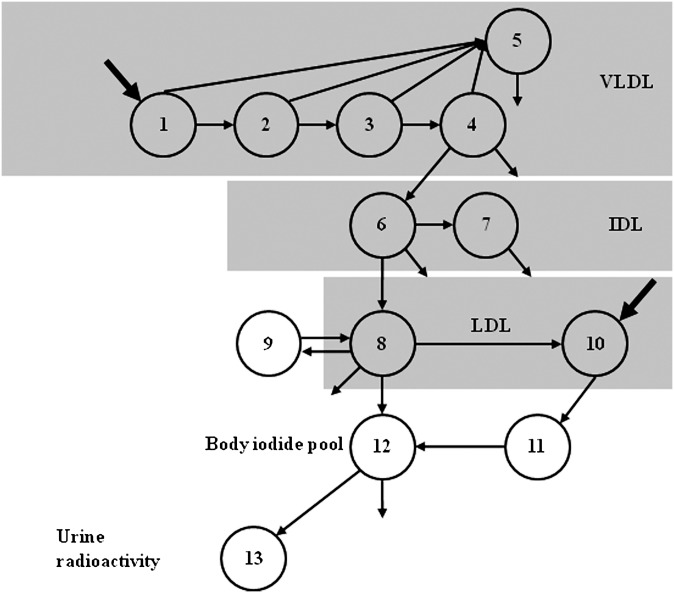Fig. 1.
Compartment model describing VLDL, IDL, and LDL apoB kinetics. Five compartments are used to describe the kinetics of apoB in VLDL. Compartments 1–4 represent the VLDL delipidation cascade and compartment 5, a slowly turning over VLDL pool. VLDL particles can be converted to IDL or removed directly from plasma. Plasma IDL kinetics are described by compartments 6 and 7, where compartment 7 represents a slowly turning over pool of IDL. IDL particles can be converted to LDL (compartment 8) or removed directly from plasma. LDL kinetics are described by two independent plasma compartments (compartments 8 and 10) that account for the heterogeneous nature of LDL particles. Compartment 8 exchanges with compartment 9, an extravascular compartment. LDL particles in compartment 8 can be removed directly from plasma and the 125I-label, originally associated with the LDL tracer, can be transported to the body iodide pool (compartment 12). LDL particles in compartment 10 were converted to compartment 11, and subsequently the iodine associated with the LDL was converted to compartment 12. Compartment 11 acts as a delay between compartment 10 and the body iodide pool. Compartment 13 represents the urine 125I pool.

